10 tips for a greener funeral
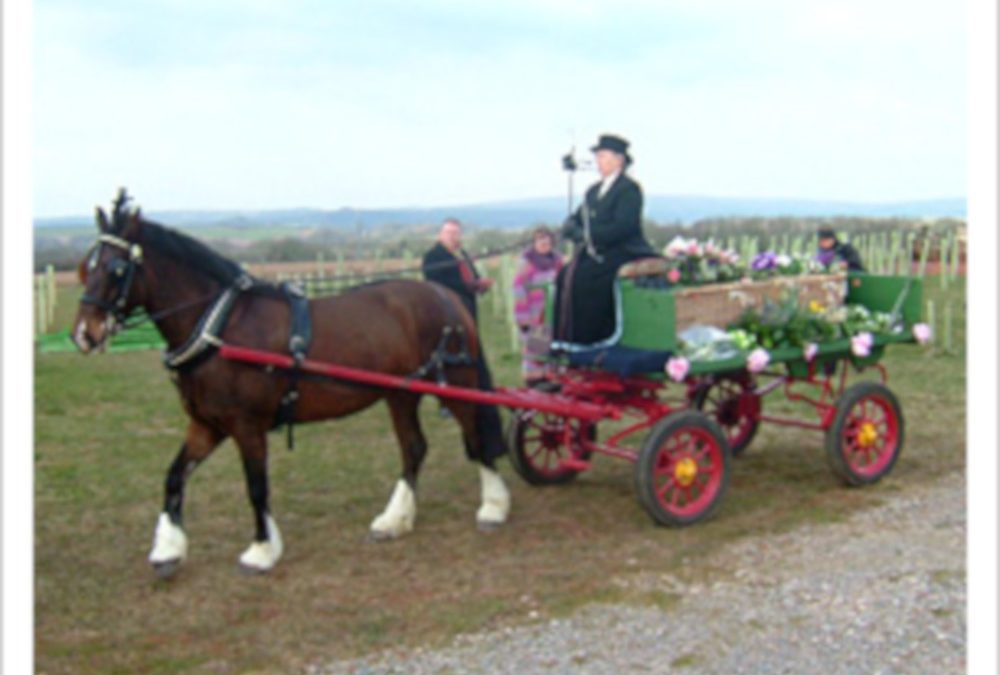
Make your final statement for a more sustainable world by choosing a green funeral.
1. Plan your funeral in advance
Make your choices and let those left behind know exactly what you want. Funerals are often organised quickly by people who feel under pressure and it’s easy for those left behind to be swept into making conventional choices you may not have made. See our page Planning Ahead.
2. Choose burial rather than cremation
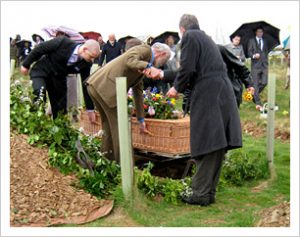 If you can find a cemetery or churchyard that is reusing old graves, that’s a very good option, as is a woodland or natural burial site if it’s not too far away. If the graves are hand dug that saves the fuel for a mechanical digger.
If you can find a cemetery or churchyard that is reusing old graves, that’s a very good option, as is a woodland or natural burial site if it’s not too far away. If the graves are hand dug that saves the fuel for a mechanical digger.
You can have a burial on private land. Two family members can be buried on their own land as long as you meet environmental guidelines on proximity to water. If you have a large piece of land, where you could annex a piece off for perpetuity, this is an option. Having processed the coffin by foot the mile from the funeral director, we held a funeral in a yurt in the garden and made the burial on the edge of the property.
3. Don’t embalm
Embalming is a process whereby your blood and body fluids are replaced with a mixture of water and formaldehyde, a substance which can cause allergic reactions, mental disturbance and is linked to several forms of cancer. When a body is buried the formaldehyde leaches into the ground and perhaps eventually into the ground water. In the case of cremation it may be emitted into the atmosphere. Unless the funeral is more than two weeks after the death or certain circumstances have caused the body to degrade, embalming really is not necessary, so state that you do not want it.
4. Avoid chipboard veneer coffins
They are made using formaldehyde. These are by far the most common coffins used for both burial and cremation as they are cheap for the funeral directors to buy and easy to handle. Most natural woodland burial sites won’t allow them. Also avoid coffins made from tropical hardwoods.
5. Choose a locally made, ecological coffin
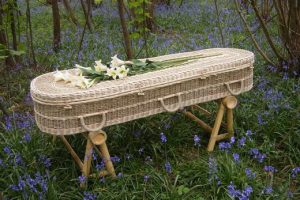 Many of the natural, biodegradable coffins you can buy now are largely made in far-off places, for example bamboo from China, banana leaf and pandanus from Indonesia and increasingly willow coffins come from Poland. Although the companies who import them pack them as efficiently as possible and the actual sea journey may not take much energy, there may be long road journeys to and from the port. If you are buying a willow coffin, there are at least two companies in Somerset that grow and manufacture locally and you may even find a local grower and maker in your area.
Many of the natural, biodegradable coffins you can buy now are largely made in far-off places, for example bamboo from China, banana leaf and pandanus from Indonesia and increasingly willow coffins come from Poland. Although the companies who import them pack them as efficiently as possible and the actual sea journey may not take much energy, there may be long road journeys to and from the port. If you are buying a willow coffin, there are at least two companies in Somerset that grow and manufacture locally and you may even find a local grower and maker in your area.
If you want a wood coffin, find out about where the wood is grown and whether its FSC registered. There is a good untreated FSC pine coffin that comes flatpack and therefore minimises transport (www.eco-coffins.com). There are quite a few cardboard coffins on the market. It’s worth asking which type you are being offered and calling the manufacturer to find out what proportion of the board is made with recycled materials and whether they or their suppliers use chlorine bleaches. If you buy a plain cardboard or pine coffin, you then give your family and friends the option to decorate it beautifully, with water based paints.
Or don’t use a coffin at all, but a shroud instead
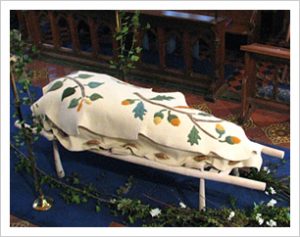 There is no legal requirement to use a coffin, although crematoria will insist on one to ease the loading of the body into the cremator and so as not to cause offence. But for burial you can use a shroud (check your local cemetery rules), which is just to wrap the body in a few metres of material, or you can purchase a beautiful natural felt shroud from Bellacouche (www.bellacouche.com or 01647 432155). See video below.
There is no legal requirement to use a coffin, although crematoria will insist on one to ease the loading of the body into the cremator and so as not to cause offence. But for burial you can use a shroud (check your local cemetery rules), which is just to wrap the body in a few metres of material, or you can purchase a beautiful natural felt shroud from Bellacouche (www.bellacouche.com or 01647 432155). See video below.
If you lay the body on a board, place wadding on top (if you want to disguise the body shape) and wrap the material around, you then have a shroud you can carry on a stretcher or with ropes or webbing.
6. Minimise the amount of fuel needed to transport the coffin and the mourners
There is no legal requirement to use a big, petrol-thirsty hearse. For many thrifty people who’ve led a sustainable lifestyle, it just seems the wrong choice anyway. You can ask the funeral director if they have another vehicle – we often use a diesel MPV – or you can use a family car if you have one large enough, or hire one for the day. Pat arrived in the organic vegetable van he used to drive, which ran on biofuel.
If you need to travel a number of miles to the nearest crematorium or natural burial ground, arrange for the mourners to gather locally and hire a bus to transport them to the funeral. For a really local funeral, you could process the coffin by foot. Add a few musicians and flags of bright material and you have a dramatic event.
7. Depth of burial
When people are buried ‘six feet under’ the process of decomposition becomes anaerobic and the body putrefies and leeches downwards to the water table. Ask about the possibility of being buried nearer to the surface, which may be possible in a natural burial site.
8. Choose your memorial carefully
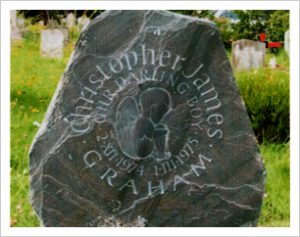 Many memorial stones now are made from stone that’s imported from as far away as India and China. Choose local stone if possible, or some other material such as local wood. Many natural burial sites don’t allow memorial stones at all, or just small, flat plaques.
Many memorial stones now are made from stone that’s imported from as far away as India and China. Choose local stone if possible, or some other material such as local wood. Many natural burial sites don’t allow memorial stones at all, or just small, flat plaques.
Choose a memorial site you can visit without lots of car miles. Whether you have a grave or choose somewhere to scatter or inter the ashes, think about how far you’d need to travel in the car each time if you were to make regular trips.
9. No cellophane
Insist that the florist does not wrap the flowers in cellophane, which only mists up and rots them anyway. Ask them to use only natural materials, and, even better, to use seasonal and local flowers – or pick foliage and flowers from your garden.
10. Make a carbon offset from your estate
Most of us have a large carbon footprint. A great legacy to leave is to make a contribution to the Woodland Trust or other tree-planting scheme, or to buy and plant up a piece of land. I worked out I could offset my life’s footprint for £8,000.
These ideas and many others are explored more fully in We Need To Talk About The Funeral – 101 Practical Ways To Commemorate And Celebrate A Life by Jane Morrell and Simon Smith, available as a downloadable e-book.




